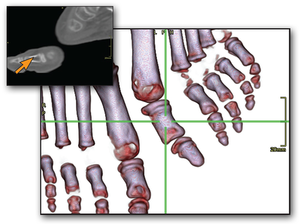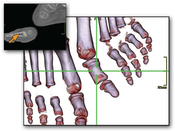Information
- Publication Type: Conference Paper
- Workgroup(s)/Project(s):
- Date: May 2008
- ISBN: 978-1-4244-2002-5
- Location: Paris, Frankreich
- Lecturer: Stefan Bruckner
- Booktitle: Proceedings of 5th IEEE International Symposium on Biomedical Imaging: From Nano to Macro
- Conference date: 14. May 2008 – 17. May 2008
- Pages: 820 – 823
- Keywords: viewpoint selection, medical visualization, volume rendering
Abstract
One of the main obstacles in integrating 3D volume visualization in the clinical workflow is the time-consuming process of adjusting parameters such as viewpoint, transfer functions, and clipping planes required to generate a diagnostically relevant image. Current applications therefore make scarce use of volume rendering and instead primarily employ 2D views generated through standard techniques such as multi-planar reconstruction (MPR). However, in many cases 3D renditions can supply additional useful information. This paper discusses ongoing work which aims to improve the integration of 3D visualization into the diagnostic workflow by automatically generating meaningful renditions based on minimal user interaction. A method for automatically generating 3D views for structures in 2D slices based on a single picking interaction is presented.Additional Files and Images
Weblinks
No further information available.BibTeX
@inproceedings{bruckner-2008-IVV,
title = "Integrating Volume Visualization Techniques Into Medical
Applications",
author = "Stefan Bruckner and Peter Kohlmann and Armin Kanitsar and
Eduard Gr\"{o}ller",
year = "2008",
abstract = "One of the main obstacles in integrating 3D volume
visualization in the clinical workflow is the time-consuming
process of adjusting parameters such as viewpoint, transfer
functions, and clipping planes required to generate a
diagnostically relevant image. Current applications
therefore make scarce use of volume rendering and instead
primarily employ 2D views generated through standard
techniques such as multi-planar reconstruction (MPR).
However, in many cases 3D renditions can supply additional
useful information. This paper discusses ongoing work which
aims to improve the integration of 3D visualization into the
diagnostic workflow by automatically generating meaningful
renditions based on minimal user interaction. A method for
automatically generating 3D views for structures in 2D
slices based on a single picking interaction is presented.",
month = may,
isbn = "978-1-4244-2002-5",
location = "Paris, Frankreich",
booktitle = "Proceedings of 5th IEEE International Symposium on
Biomedical Imaging: From Nano to Macro",
pages = "820--823",
keywords = "viewpoint selection, medical visualization, volume rendering",
URL = "https://www.cg.tuwien.ac.at/research/publications/2008/bruckner-2008-IVV/",
}


 Paper
Paper
